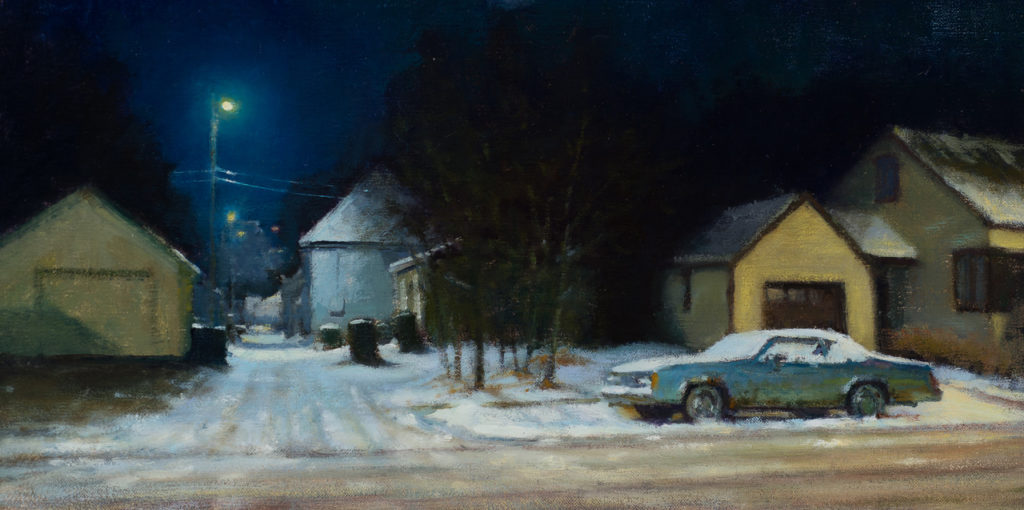Landscape oil paintings > For many artists, positive reception of their pictures is simply a bonus, not the true end to their creative means. For painter Carl Bretzke, the creative act seems to boil down into one lovely emotion: joy. How?

Finding joy through painting is something artists, collectors, and connoisseurs certainly experience. Painter Carl Bretzke of Minneapolis, Minnesota, is no different, though joy is often combined with a sense of urgency when a scene captures his imagination. The artist writes, “I think it’s important to be excited about what you paint. I can’t put my finger on exactly why a certain scene appeals to me, but I know that I experience a joyful sense of urgency when I see it. Often the scene will be some off combination of the mundane and the sublime. I then want to start the piece as quickly as possible before the light changes.”

Once the moment of inspiration strikes, the scene’s light, subject, and color dictate Bretzke’s creative process for his oil paintings. He says, “Technically, I rarely start any painting the same way anymore. Early on, I used a Payne’s gray underpainting taught to me by Joe Paquet. This allows me to draw and freeze the light effect quickly. As my skills have improved, I have eventually learned to shortcut the process by adding color earlier and keying in some light values early as well.”

As the painting evolves, knowing when the work is finished is perhaps one of the most subjective and challenging moments. For Bretzke, this moment is both technical and personal. He says, “I know when a plein air piece is completed when I feel like any additional paint will start to diminish the fresh feeling of the image or when my wife, Kristie (also a painter), says, ‘I’m hungry, you’re done.’”
In addition to working en plein air, Bretzke has a matured studio practice that allows him to work in a slower, more detailed manner. “I spend a lot more time analyzing and making lists of things to work on or change in the studio. It’s like this until I can’t think of anything else.”

As a writer for The Washington Post once remarked of Bretzke’s paintings, “They’re a little lonely and simultaneously intimate and detached.” The assessment seems apropos, as the artist’s landscapes and cityscapes are seldom populated with figures. The effect can be a ghostly one, but the absence of the figure only encourages the viewer to place himself or herself within the artist’s creative world. The pictures seem to invite you into their spaces while evoking feelings of nostalgia.
The future is bright for Bretzke — and sure to be filled with lots more painting. The artist writes, “This is an exciting time for me. I have retired from my medical practice and plan to put that energy into my painting. I will paint constantly and study more. I want to balance out my plein air work with some more carefully thought out studio pieces. I hope to be as excited about painting as I am now in the distant future — and hopefully better at it. My happiness comes from the journey. My only goal has been to become a better painter.”

To see more landscape and nocturn oil paintings by the artist, visit Carl Bretzke online.
This article was featured in Fine Art Today, a weekly e-newsletter from Fine Art Connoisseur magazine. To start receiving Fine Art Today for free, click here.








